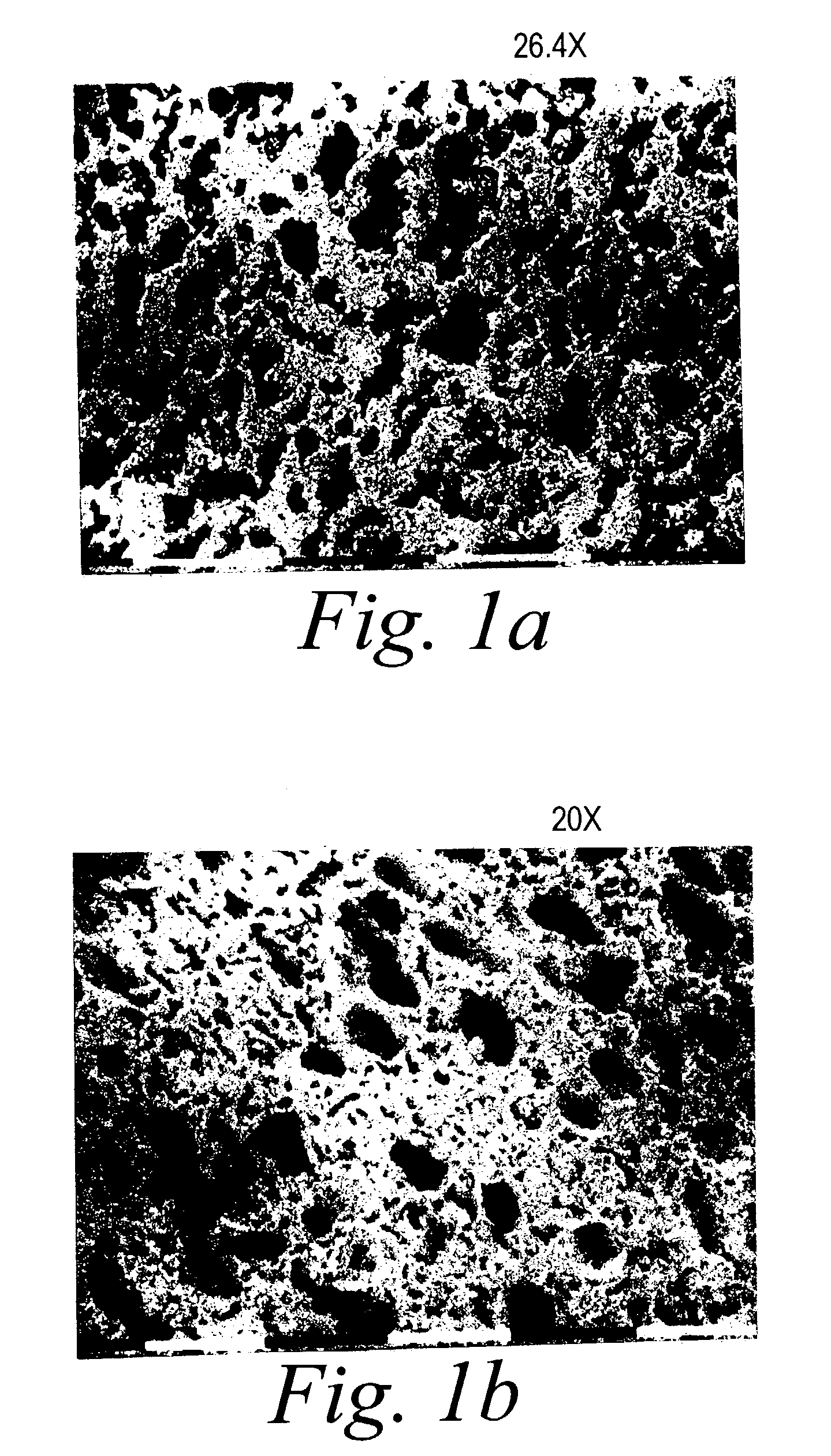Calcium phosphate bone replacement materials and methods of use thereof
a technology bone replacement, which is applied in the field of calcium phosphate bone replacement materials, can solve the problems of donor site morbidity, limited graft types, and remaining tissu
- Summary
- Abstract
- Description
- Claims
- Application Information
AI Technical Summary
Problems solved by technology
Method used
Image
Examples
example 1
[0080]30 gm of hydroxyapatite (from Mutter Chemical Company under the name of tricalcium phosphate, Ca10(PO4)6(OH)2) was added to 32.5 ml of 85% orthophosphoric acid in a porcelain bowl. The mixture was ground and heated at 760° C. for 30 seconds. This process was repeated twice. The mixture was cooled down and placed in a stainless mold. A hydraulic press was used to compress the powder mixture in the mold to about 10,000 psi for about 30 seconds and then removed from the mold. The pressed mixture was then heated in an electric furnace on an inert boron nitride support. The heating rate was about +1.67° C. / minute and the temperature was held at 870° C. (e.g., 20° C. below 890° C., the beginning of the molten state of the reacting mixture) for 12 hours. After the 12 hours' incubation, the calcium phosphate block was cooled down slowly at the rate of −1.67° C. / minute to room temperature.
[0081]Qualitative analysis of the block showed that the calcium phosphate material contained 19.65...
example 2
[0083]30 gm of hydroxyapatite (from Mutchler Chemical, Ca10(PO4)6(OH)2) is added to 32.5 ml of 85% orthophosphoric acid in a porcelain bowl. The mixture is ground and heated at 760° C. for 30 seconds and this process is repeated twice, before being cooled to room temperature. The mixture is pressed under 10,000 psi for about 30 seconds. Then the mixture is heated in an electric furnace at a rate of 0.5° C. / minute and the temperature is held at 250° C. for 30 minutes. After the 30 minutes' incubation, the temperature is cooled down to room temperature. The resulting mixture is a manipulable white-colored paste and which can be shaped with hand or placed in a mold. Then, the shaped paste is placed on an inert boron nitride surface in an electric furnace and the temperature is raised at the rate of 1.67° C. / minute to 870° C. (e.g., 20° C. below the beginning of the molten state of the reacting mixture). The temperature is then held at 870° C. for another 12 hours. At the end of the 870...
example 3
[0086]Using the method described in Example 1, the pressure applied to the mixture while being placed in a stainless mold is varied. The pressure applied to the mold ranged from about 100 psi to 20,000 psi. The volume of the resulting mixture varies corresponding to the applied pressure. After the subsequent heating in the furnace according to the same procedure described in Example 1, the bulk density of the pressured mixture ranged from around 1.0 gm / cm3 to 2.2 gm / cm3.
PUM
| Property | Measurement | Unit |
|---|---|---|
| temperature | aaaaa | aaaaa |
| pressure | aaaaa | aaaaa |
| pressure | aaaaa | aaaaa |
Abstract
Description
Claims
Application Information
 Login to view more
Login to view more - R&D Engineer
- R&D Manager
- IP Professional
- Industry Leading Data Capabilities
- Powerful AI technology
- Patent DNA Extraction
Browse by: Latest US Patents, China's latest patents, Technical Efficacy Thesaurus, Application Domain, Technology Topic.
© 2024 PatSnap. All rights reserved.Legal|Privacy policy|Modern Slavery Act Transparency Statement|Sitemap



